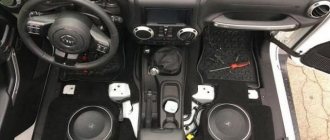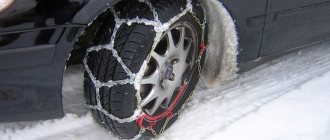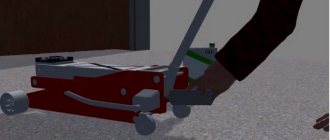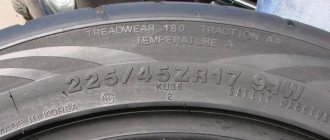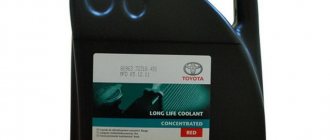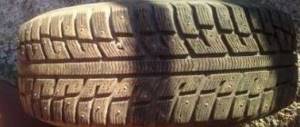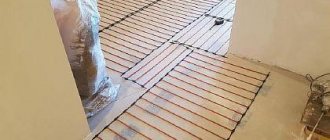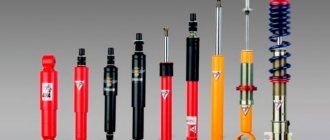Fabric for covers
Natural fabric fibers absorb water perfectly. They do not form a “greenhouse” effect in the summer season and do not let in the cold on winter days. But such material is more often susceptible to contamination, and may become “addicted” from washing.
The service life of covers made from this material is not very long; the colors quickly lose their brightness. Synthetics are a completely different matter. But it absorbs moisture worse and slips under your hand, creating some inconvenience. Any spark can cause such material to melt and ignite. A serious problem is electrification from friction. Sometimes you can even feel it yourself. Domestic car manufacturers most often use tapestry containing synthetics. Fur covers made from artificial material are excellent in the cold season, but in the summer they are not entirely comfortable to use.
Patterning car seat covers even helps correct the shape of the seats. For this purpose, small rollers should be sewn in. It should be taken into account that not all fabrics used for upholstering furniture can be used for making car seat covers. Leather cases will cost you quite a lot, and sheepskin products will require careful care.
Main varieties
As you know, demand creates supply. Today, car dealerships offer a wide selection of seat covers, which differ in appearance, size, functionality, material and manufacturing method.
T-shirt capes
The most common among drivers are seat covers. This model got its name due to its similar style to an undershirt.
The main advantages of a T-shirt cover are functionality, practicality, and ease of use. You can sew a car cape-shirt yourself.
Model
Model covers are made to order in automobile studios and special showrooms. They exactly follow the shape and dimensions of car seats. Removing a model case made of thick fabric or eco-leather will be very problematic.
Knitted
Hand-made products are highly valued by contemporaries. Knitted capes and headrests will make the car interior more comfortable and homely.
If you have crocheting or knitting skills, you can easily cope with this task. The product must be wear-resistant, durable and functional. When choosing yarn for knitting, carefully study the quality characteristics of the threads. The finished product should hold its shape well, not stretch, not curl or float.
You can choose the pattern for the cover at your discretion. However, you should not knit with openwork knitting, which over time loses its strength and density.
Massagers
Some drivers spend a lot of time behind the wheel. Prolonged sitting has a negative impact on human health. To reduce the load on the musculoskeletal system, it is necessary to install massage capes.
Material requirements
The fabric for making covers must be of different density and quality. Recommended use:
- eco leather. Eco-leather car seat covers are an excellent option, specially designed for interior finishing work. The material does not lose color and is resistant to bending;
- flock - often used for furniture repair;
- velor - fabric with pile. The advantage is that the material does not fade and retains its shape after washing. The material is inexpensive, but is famous for its durability.
How to sew car covers
To sew covers, you need to prepare tools and materials:
- sewing machine;
- a set of sewing needles and pins;
- cutting chalk or marker;
- tailor's meter;
- tailor's scissors and construction knife;
- sewing thread.
The list of tools may vary greatly depending on the sewing materials used.
The specific list will depend on the materials used. After the patterns and tools are prepared, you can begin to connect the elements.
When the pattern is ready, we begin to connect the elements. Depending on the material used, appropriate threads and needles are used
To strengthen the seams when sewing, you can use a strong insert made of nylon or leather tape. This technology will make the covers more durable and practical. It is worth considering that the fabric used as the main one should not be too soft, since the finished product may have a baggy appearance. To give the case a clear shape and add some texture to the design, a more rigid material should be used for the side inserts. To securely fix the finished product, special hooks, elastic bands or tapes are used, which will prevent the covers from slipping off the seats.
Particular attention should be paid to connecting the parts of the rear sofa, taking into account its design features, since the seat may have an armrest. It is also necessary to take into account the fact that the rear seats are often made folding for access to the luggage compartment. Regardless of the material chosen, the finished design should in no way affect comfort.
Video: making patterns and sewing covers
Making patterns
Polyethylene is best suited for these purposes. But if you don’t have such film, then a regular newspaper will do. It should be attached, secured with pins, outlined with a felt-tip pen and cut along the lines.
It is recommended to check the symmetry. In case of deviations, the future pattern should be straightened and re-checked by placing it on the seat again. Only now is it possible to cut the workpiece, leaving seam allowances of at least one centimeter on all sides.
Cases made of soft materials
To prevent them from looking baggy, patterns should be made from two types of material - the main one and the mattress one. They are connected together with the wrong sides facing each other.
But just remember that it is necessary to provide an unsewn hole. Foam rubber material cut in advance is inserted through it. The headrest and armrest areas are made without such inserts. All that remains is to stretch them and sew them up. When the seats located at the bottom have plastic linings, they must first be removed. Now you can press the edges of the cover with them, which will make it possible to securely fix it.
Some pro tips
You can sew zippers on the armrest areas, making it easier to remove and put on the covers. There are brands of cars where the backrests tilt back in individual elements. Normal types of cases will not fit under them.
Some cars have airbags in the end parts of the backrests. If you put covers on top, they will not be able to open. For this reason, the upholstery on such seats will simply have to be cleaned.
If you still decide to make covers, then leave slits at the points where the pillows fly out. They can be stitched with cotton thread, which will tear easily. The work is simple and can be done independently.
Step-by-step algorithm for installing car capes
If you decide to attach the seat covers yourself, follow the simple rules and everything will work out. You can find a video on the Internet, and we suggest that you familiarize yourself with the instructions for correctly installing covers in a car:
- We put the cape on the back of the front seat. We carefully pull the “tongue” that remains in the center into the gap between the back and the seat. The algorithm is identical for the driver and passenger seats.
- On the reverse side, using special rubber bands or belts, we fix it to the bottom of the seat and the back. On the reverse side, the fastenings may vary - these can be rings, elastic bands, clips, hooks, depending on the type of cape itself. Fasteners with elastic bands are tied under the structure and are completely invisible.
- We continue manipulations from the front side. We straighten the cape, make sure that it fits tightly on all sides and there are no folds, otherwise the product will constantly shift and quickly become unusable.
Unlike car seat covers, seat covers are easier to install and remove. Thus, the covers are pressed into the shape of the chair with maximum tightening. And the headrest is completely put on separately, while the capes are a one-piece structure for the entire chair.
Let's move on to the back seat, it's a little more complicated here due to its large size, but the principle is the same. How to put covers on car seats:
- Remove the seat belts completely and fold down the backrest.
- It is important that the zippers of the cape coincide with the break lines of the back.
- We put on the cape, starting from the edge, straightening the folds and immediately fixing it on the hooks to the bottom, and then to the back of the seat. It is better to perform this action together - it’s faster, and the cape will not constantly slide down the sides.
- We start by putting the cape on the back from the top. We pull it tightly and fix it on the reverse side with elastic bands and hooks to the seat.
How to quickly install covers on the front seats in practice
For a guaranteed quick installation, follow the recommendations of professionals:
- you move the seats as far back as possible, it’s easier to install and nothing interferes, plus there is no risk of snagging and tearing the product, there is no point in removing it completely from the body, as is done when putting on a car cover - the covers are more compact and easier to install;
- if you have separate capes, then start with something simple - cover the seat, and then the back;
- You can first throw it on and secure it with long elastic bands, and then straighten it, tighten it and bring it into place, this will help to avoid distortion, and the cape will not constantly move out;
- It is worth fixing it finally only after carefully inspecting the seat from all sides, otherwise you will have to work hard to remove the ties, and you will spend more time on this.
There is no need to use improvised means for fixing - this may damage the design of the fastenings, and the capes will not be securely placed on the seats.
Installing capes: useful tips
When choosing covers for your car and wanting to install them yourself, pay attention to the important nuances:
- The more tightly the cape is installed and securely fixed, the longer its service life, plus it will be possible to remove them and clean them without any problems. Take the time to check whether the products are correctly secured; this important nuance will help preserve the aesthetic appearance of the chairs longer;
- all accessories - additional pillows, belts also need to be removed, they get in the way and do not allow you to assess whether the cape is correctly fastened;
- be sure to turn off the ignition before installing covers or when moving seats in the cabin or removing belts - this is for your safety;
- There is no need to remove the plastic inserts on the sides of the seats, and to better push the fabric between the seat and the plastic, you can use any plate.
Buy capes made of high-quality materials - this guarantees reliability of fastenings, wear resistance, as well as ease of installation. You save on stretching and are guaranteed to extend the life of your updated car interior.

